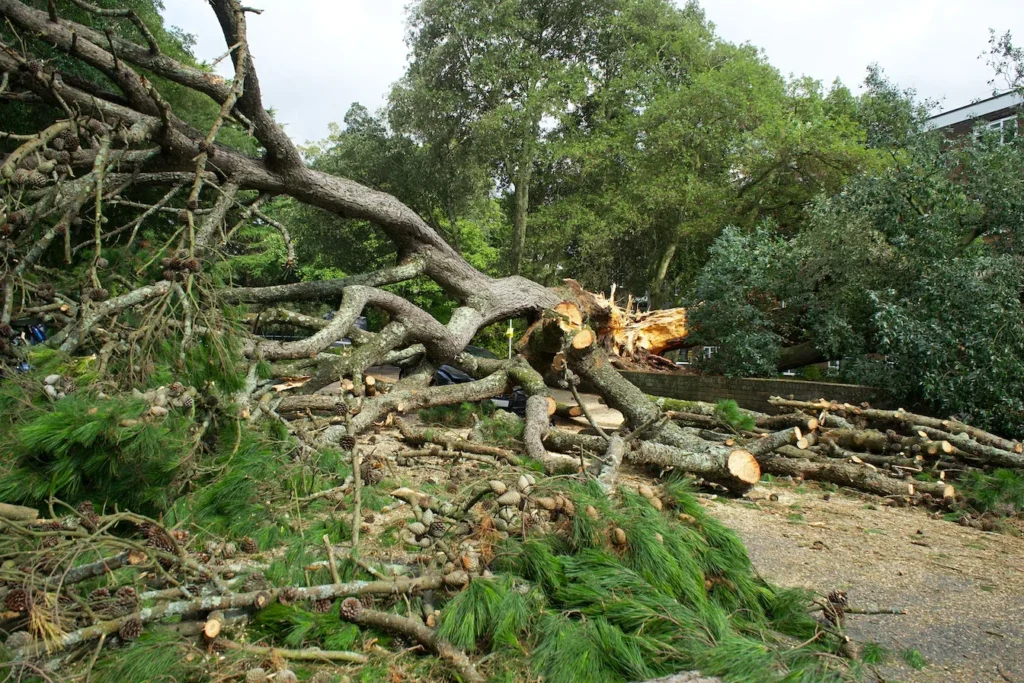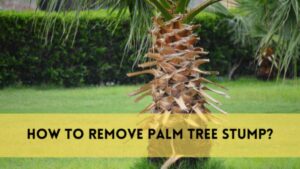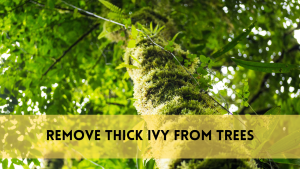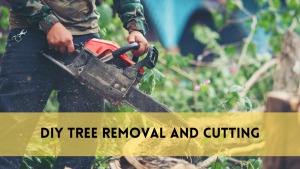A dead tree in your yard can be both a visual annoyance and a potential hazard in the context of house ownership. Addressing this scenario necessitates careful consideration and intelligent decision-making. Welcome to King wood Arborist’s instructive guide, in which we will traverse What to Do with a Dead Tree in Your Yard. This article seeks to empower you with expert advice on everything from identifying the root reasons to researching removal and reuse possibilities. Join us on a quest to not only manage a dead tree, but also make decisions that are both environmentally aware and practical.
What to Do with a Dead Tree in Your Yard.
Assessing the Situation: Understanding Why the Tree Died
Unravelling the mystery surrounding a deceased tree is the first step toward proper treatment. King wood Arborist provides analytical clarity into prevalent reasons, leading homeowners through this critical understanding. Environmental stresses, infections, and root injury are among the variables studied. Understanding these interactions provides property owners with a better understanding of their green companions’ health. King wood Arborist highlights the value of this initial assessment, which serves as a road map for making educated decisions. Armed with understanding about why the tree died, homeowners may take the next steps to ensure a smart and individualized approach to tackling the issues given by a dead tree in their yard.
Potential Risks: The Importance of Timely Action
Dead trees are more than simply a visual issue; they also represent practical threats that must be addressed immediately. Kingwood Arborist emphasizes the essential need of taking prompt action when dealing with a deceased tree. The possible hazards, such as falling branches or full tree collapse, can endanger the safety of your home and people nearby. Kingwood Arborist emphasizes the need of tackling these concerns proactively. Understanding the imminent threats posed by a dead tree allows homeowners to prioritize safety, reducing the risk of property damage and ensuring the well-being of their surrounds. Timely action becomes not just a practical need, but also a responsible measure in protecting both property and community from the risks linked with a dead tree in the yard.
Removal Options: Ensuring a Safe and Efficient Process
When dealing with a dead tree in your yard, selecting on the best removal method is critical. Kingwood Arborist offers a thorough examination of alternative options, assuring a safe and efficient procedure.
Professional tree removal services stand out as the best option, providing experience and specialized equipment for a safe extraction. Kingwood Arborist emphasizes the benefits of hiring qualified professionals, from accurate tree assessments to meticulous dismantling of the tree, which reduces potential dangers.
For those who want a more hands-on approach, DIY eradication methods are described. Kingwood Arborist provides information on the instruments and procedures required for a safe DIY removal, recognizing that this option may be appropriate for smaller trees and those with the proper expertise.
Regardless of the method, King wood Arborist emphasizes the need of following safety protocols. From assessing the tree’s size and condition to taking into account the surrounding environment, homeowners are guided to make decisions that prioritize human safety as well as efficient removal. By investigating these removal choices, property owners may confidently manage the process, assuring a safe and effective resolution to the problem posed by a dead tree in their yard.
Repurposing Strategies: Sustainable Alternatives for Environmental Consciousness
Rather of perceiving a dead tree as simply waste, King wood Arborist promotes environmentally conscientious reuse solutions. This section digs into innovative and sustainable solutions for repurposing tree remnants into useful resources.
Kingwood Arborist investigates the possibility of converting the wood into mulch, a natural and nutrient-rich resource that might improve soil health. Furthermore, the use of wood for artistic or utilitarian projects is emphasized, encouraging a responsible approach to resource utilization.
Kingwood Arborist encourages reusing in order to reduce waste and contribute to a better environment. Homeowners are encouraged to consider these sustainable solutions, which promote environmental responsibility and ingenuity in dealing with the aftermath of a dead tree in their yard.
Hiring Professionals: The Benefits of Arborist Expertise
When dealing with a dead tree, it is important to consult with an arborist. Kingwood Arborist discusses the essential advantages of getting professional help. Arborists bring a lot of experience to precisely analyze the tree’s health, detecting any hazards and advise on the best course of action. Their knowledge of safe and fast removal processes guarantees that the process is streamlined and secure. Kingwood Arborist underlines that hiring arborists not only saves time but also ensures that the solution is thorough and professionally done. By seeking professional guidance, homeowners can confidently negotiate the complexity of dead tree maintenance, assuring the safety of their property and the surrounding environment.
Environmental Impact: Contributing to a Greener Tomorrow
After handling a dead tree, Kingwood Arborist focuses on the environmental impact of the chosen strategy. Recognizing the importance of responsible tree management in promoting a sustainable future, this section delves into eco-friendly approaches.
Kingwood Arborist encourages homeowners to investigate repurposing solutions that save waste and improve the environment. Whether you turn the wood into mulch for soil enrichment or use it for creative creations, each action has the potential to lessen your environmental footprint.
By raising awareness of the environmental consequences, Kingwood Arborist emphasizes the importance of individuals in building a greener tomorrow. Responsible dead tree management goes beyond property lines, helping to the communal endeavour to achieve environmental sustainability and the well-being of our world.
FAQS
How can I tell if my tree is dead or just dormant?
Kingwood Arborist recommends looking for important markers like as brittle bark, the absence of buds, and a lack of leaf growth during the expected season to distinguish between dormancy and mortality.
Can a dead tree be revived?
Unfortunately, once a tree dies, it cannot be revived. Kingwood Arborist advocates focusing on safe removal and repurposing techniques.
Are there any government rules regarding dead tree removal?
Regulations vary, so check with local authorities. Kingwood Arborist emphasizes following any applicable rules to prevent legal ramifications.
What is the cost of professional tree removal?
Costs vary depending on the size of the tree and its location. Kingwood Arborist recommends seeking quotes from trustworthy tree removal businesses to ensure accurate estimates.
Can I use the wood from a dead tree as firewood?
Yes, if the wood is dry and seasoned. Kingwood Arborist advises against burning unhealthy wood to prevent the spread of infections.
Conclusion
As we end this comprehensive instruction from Kingwood Arborist on how to deal with a dead tree in your yard, the journey of informed decision-making begins. We’ve expertly handled the difficulties of tree demise, from recognizing the causes to researching removal choices, repurposing ideas, and addressing environmental impact.
Kingwood Arborist emphasizes the need of taking prompt action, whether through safe removal or long-term repurposing. The environmental conscience integrated into repurposing tactics indicates a dedication to a better future.
How useful was this post?
Click on a star to rate it!
Average rating 0 / 5. Vote count: 0
No votes so far! Be the first to rate this post.




